Christie's announces highlights included in its Fine Chinese Ceramics and Works of Art auction in London
Headlining the auction is a magnificent Imperial gilt-bronze bell, bianzhong, dated to the eighth year of the Qianlong reign, 1743, from an Important European Collection. Estimate £800,000 - 1,200,000 (USD 1,028,000 - USD 1,542,000). © Christie's Images Ltd 2019.
LONDON.- On 5 November, Christie’s Fine Chinese Ceramics and Works of Art auction will present 227 lots spanning three millennia of Chinese art from the Shang Dynasty to the Republic period. The sale features private collections of archaic bronzes, jade carvings, cloisonné enamel works of art, paintings, Song ceramics and imperial Ming and Qing dynasty porcelain from the UK, Europe and Asia. The auction will be complemented by an online sale of The van Daalen Collection of Chinese Art, which offers over 100 lots from the Estate of Albert and Leonie van Daalen, Geneva, Switzerland, and showcases the breadth of their collecting tastes from Song Dynasty Chinese ceramics to Ming and Qing dynasty blue and white, coloured enamelled porcelain and cinnabar lacquer works of art. Works will be on view and open to the public from 1 to 4 November, coinciding with Asian Art in London.
Headlining the auction is a magnificent Imperial gilt-bronze bell, bianzhong, dated to the eighth year of the Qianlong reign, 1743, from an Important European Collection (estimate £800,000 - 1,200,000). These finely cast bells were essential in conducting Confucian rituals at the Imperial altars and other state ceremonies, including ascension ceremonies when a new emperor took the throne, formal banquets and other court assemblies, and during processions of the Imperial Guard. The Qianlong Emperor is regarded as one of the most prolific of all the Chinese Imperial collectors, and it is perhaps fitting that it was once in the impressive and eclectic collection of the famous American businessman William Randolph Hearst (1863-1951), one of the greatest American collectors of the 20th century. A major, and extremely influential, publisher, Hearst amassed an art collection of immense size and scope, much of which he showcased in his retreat at Hearst Castle, San Simeon, California.
Lot 85. A magnificent Imperial gilt-bronze bell, bianzhong, Qianlong period, dated by inscription to the eighth year of the Qianlong reign, corresponding to 1743; 10 ¾ in. (27.3 cm.) high, weight 14.9 kg. Estimate £800,000 - 1,200,000 (USD 1,028,000 - USD 1,542,000). Unsold. © Christie's Images Ltd 2019.
The bell is powerfully cast to the exterior in high relief with a wide band depicting a pair of five-clawed dragons surrounded by scrolling clouds above crashing waves, separated by two rectangular inscribed panels. One panel encloses the incised reign mark Qianlong ba nian zhi, 'made during the eighth year of the Qianlong reign', and the other panel contains the incised characters beinanlu, indicating that the bell's musical pitch is the low octave of the tenth note. The band of dragons is set between narrow bands of foliate sprays and cloud scrolls, all above two circular striking discs, one to the front and the other to the back. The bell is surmounded by a pair of five-clawed dragons which intertwine to form the handle.
Provenance: With Yamanaka & Co., Ltd.
The American Art Galleries, New York, The Notable Yamanaka Collection of Artistic Oriental Objects and Decorative Art, 5 February 1921, lot 579.
Collection of William Randolph Hearst (1863-1951), purchased from the above auction.
Collection of Blanche Wilbur Hill (former daughter-in-law of William Randolph Hearst), purchased from the above collection on 9 January 1961.
Sotheby's New York, 15-16 September 2015, lot 160.
Imperial Resonance:
An Extremely Rare Imperial Gilt-Bronze Bell
Rosemary Scott, Senior International Academic Consultant Asian Art
This magnificent and rare gilt-bronze bell bears an inscription dating it to the eighth year of the Qianlong reign, equivalent to AD 1743, and a further inscription identifying the tone of the bell. Bells of this type were known as bianzhong and were usually assembled in sets of sixteen, providing twelve musical tones with four repeated notes in lower or higher octaves. The twelve Chinese musical tones are arranged in the following sequence: Huangzhong (1st), Dalü (2nd), Taicu (3rd), Jiazhong (4th), Guxi (5th), Zhonglü (6th), Ruibin (7th), Linzhong (8th), Yize (9th), Nanlü (10th), Wuyi (11th), and Yingzhong (12th). In Chinese musicology, the twelve main tones alternately provide yang, positive, and yin, negative, notes. The four repeated bells of lower octaves, making up the total of sixteen, are Bei Yize, Bei Nanlü, Bei Wuyi, and Bei Yingzhong. The current bell bears an inscription identifying it as Bei Nanlü. The sixteen bells were arranged in accordance with the musical note of the individual bells, which was determined by their thickness. The height of the bells in a set did not vary, only the thickness. The current bell was one of the heaviest and would have been hung from the lower horizontal beam of the frame, third from the right. The bells were cast from bronze then hand finished to achieve precisely the right pitch before being gilded. While a small number of such bells are known, the heavier bei bells are very rare.
Bianzhong bells were essential in conducting Confucian rituals at the Imperial altars and other state ceremonies, including ascension ceremonies when a new emperor took the throne, formal banquets and other court assemblies, and during processions of the Imperial Guard. It may be significant that the current bell is dated to the eighth year of Qianlong, 1743, since it was in this year that the Qianlong Emperor made his first ‘Northern Tour’ to visit the ancestral tombs in Mukden (modern day Shenyang in Liaoning province). Undoubtedly, formal music would have been required for the rituals performed in honour of the imperial ancestors. This tour, which lasted 107 days, was very important to the Qianlong Emperor, and he commemorated it by writing Ode to Mukden in the classical Chinese fu style. The ode was originally written in Chinese as Yuzhi Shengjing fu and was later translated into Manchu as Han-i araha Mukden-i fu (or fujurun) bithe. The Emperor would have wished to have ritual accoutrements of the highest quality for use in the ceremonies conducted during the tour.
Sets of bells were part of a group of musical instruments that were required by court protocol to play the dignified music which formed an important part of significant occasions. This music was divided into two types and played by two sets of musicians. One was the Zhonghe shaoyue, which was known as the Eight Tones, since the sixteen types of musical instrument that took part were made from eight different materials - metal, stone, silk, bamboo, gourds, pottery, leather and wood. The Zhonghe shaoyue musicians and their instruments were usually placed within the area in which the ceremony was taking place. Zhonghe shaoyue music could also include singers. The frame from which the bells hung was placed to one side, and a frame from which hung sixteen jade bianqing chiming stones was placed on the other. The second group of musicians was associated with Danbi dayue music and they were usually stationed within an appropriate gate. No singers accompanied Danbi dayue musicians.
Spectacular bells, like the current example, would have been suspended in two tiers of eight, attached to a tall lacquered wooden frame, and were part of the assemblages required on certain formal occasions at court. The frame holding the bells was usually decorated at either end of the top horizontal beam with a dragon, while the vertical poles of the frame stood on felines. A set of these bells, along with a set of chiming stones, is depicted in a court painting of 1754 attributed to Giuseppe Castiglione (1688-1766 Lang Shining) entitled, Imperial Banquet in Wanshu Garden, (illustrated by Chuimei Ho and B. Bronson, Splendors of China's Forbidden City, Chicago, 2004, p. 52, pl. 42). The Wanshu Garden was in the imperial palace at Chengde, Hebei province, and the banquet depicted in the painting was for the leaders of the Torgut Mongols. Another set of such bells can also be seen on the terrace in front of the Taihe dian (Hall of Supreme Harmony) in the Forbidden City, Beijing, in a scroll painting depicting the wedding of the Guangxu Emperor in 1889 (illustrated in Daily Life in the Forbidden City, Wan Yi, Wang Shuqing and Lu Yanzhen (eds.) Rosemary Scott and Erica Shipley (trans.), Viking, Harmondsworth, England, 1988, pp. 46-7, pl. 61).
A similar set of sixteen bells dating to the Qianlong reign and preserved in the Forbidden City, Beijing, is illustrated in Daily Life in the Forbidden City, op. cit., p. 39, pl. 43. Another set of sixteen Qianlong bells, decorated with trigrams, is preserved in the Confucian Temple, Beijing (illustrated by Bruce Doar in ‘The Preservation of Beijing’s Confucian Temple’, Orientations, vol. 26, July/August 1995, p. 63). It has been noted that in 1741, the Qianlong Emperor set up a Music Division for court music and specified melodies of his choice for the various court functions, which prevailed until the early 20th century (see Splendors of China's Forbidden City, op. cit., p. 52). A bell of dragon design, closely related to that of the current bell, also dated to the 8th year of the Qianlong reign (AD 1743) but of Zhonglü, 6th, tone, was sold at Christie's Hong Kong, 27 May 2008, lot 1540 (fig.1). Another Qianlong bell with dragon decoration, again dated to 1743, but of Nanlü, 10th tone, was sold by Christie’s Hong Kong, 3 June, 2015, lot 3119. Two further comparable dragon-decorated bells, dated to 1744, are in the Palace of Fontainebleau, illustrated in Le Musée chinois de I'impératrice Eugénie, Paris, 1994, p. 47 fig. 34. From the illustration, these bells appear to be incised with the characters, Nanlü, the 10th tone, and Yingzhong, the 12th tone. On the Fontainebleau bells the characters denoting their musical tones are rendered intaglio, as on the current bell, rather than cast in relief, as on the example sold by Christie’s Hong Kong in 2015.
Two different versions of the bianzhong bells appear to have been cast in 1743. The larger version (height: 27.3 cm.), represented by the current bell, has particularly crisply cast decoration, which includes two narrow bands of classic scrolls. Each of the inscription plaques stands on a double lotus stand, as well as being framed by clouds, and has a single disc below each plaque in the lowest register of the decoration. The smaller version (height: 21 cm.) has fewer minor bands in the design, only a simple outline on the inscription plaques and eight discs, alternating with clouds, in the lowest register of the decoration. In the case of both the current 1743 bell and the smaller 1743 bell sold by Christie’s in 2015, the loop on the top of the bell – from which it would have been suspended on a frame – is cast in the shape of a dragon, depicted with a head at either end. This dragon is Pulao, one of the nine sons of the dragon, who was believed to be quite small in size but with a roar that could shake heaven and earth. Pulao was believed to roar particularly loudly when he saw a whale, and thus the instrument used to strike the bells is often shaped like a whale to suggest the loudest sound.
A set of sixteen gold bells bearing the marks ‘Qianlong wushiwu nianzhi’ (made in 55th year of Qianlong reign, equivalent to AD 1790), is also preserved in the Palace Museum, Beijing (illustrated in The Complete Collection of Treasures of the Palace Museum – 57 - Treasures of Imperial Court, Hong Kong, 2004, pp. 6-7, no. 5.). This gold set was given to the Qianlong Emperor by officials in celebration of his eightieth birthday. Being gold, rather than gilded bronze, they would not have produced clear notes when struck and were thus symbolic and for display, rather than for musical use in ritual like the current bell. It appears that the last Qing emperor, Puyi, used these gold bells as lien against a loan from Beijing's Yanyue Bank, but they were returned to the Palace in 1949 (discussed ibid, p. 6).
The current bell was once in the impressive and eclectic collection of the famous American businessman William Randolph Hearst (1863-1951). A man of indomitable energy and determination, Hearst became both a major, and extremely influential, publisher and the owner of an art collection of immense size and scope. Indeed, according to one of Hearst’s obituaries, during the 1920s and 1930s his purchases accounted for some twenty-five percent of the international art market. Hearst kept much of the collection at Hearst Castle, San Simeon, California. Following the death of his mother in 1919, William Randolph Hearst inherited thousands of acres of land in the San Simeon area, and in the succeeding years he purchased more land, which eventually extended to 250,000 acres. He worked with the architect Julia Morgan (1872-1957) to create a retreat, which he named La Cuesta Encantada (Enchanted Hill). This retreat came to comprise some 165 rooms as well as 123 acres of gardens, terraces walkways and pools. It was also designed to showcase Hearst’s remarkable collection of art. Although Hearst had to leave La Cuesta Encantada in 1947, before it was finally completed, due to ill health, the collection remained at San Simeon, and much of it can still be seen there today.
On 5th February, 1921, the current bell was offered for sale by one of the most famous Asian art dealers of the day, Sadajiro Yamanaka (1866-1936), in a sale at the American Art Galleries, New York entitled ‘The Notable Yamanaka Collection of Artistic Oriental Objects and Decorative Art’, where it was listed as lot 579. Bought by Hearst, records show that the bell was sent to San Simeon on 3rd May 1921. After the death of William Randolph Hearst in 1951 the bell was stored with other items from the collection, but on 9th January, 1961, it was purchased by Hearst’s former daughter-in-law Mrs. Blanche Wilbur Hill, and passed by descent within the family.
The Qianlong Emperor is regarded by many scholars as the greatest of all the Chinese Imperial collectors, and it is perhaps fitting that this rare and magnificent bell should have been acquired by William Randolph Hearst - one of the greatest American collectors of the 20th century.
Further auction highlights include a rare pair of Imperial embellished lapis lazuli ‘Da Ji’ double-gourd-form plaques, also Qianlong period (estimate: £120,000 - 180,000), made by skilled craftsmen using the most precious materials to create not only items of exceptional presence, but also numerous auspicious messages, through the use of careful motifs.
Lot 116. A very rare and magnificent pair of Imperial embellished lapis lazuli ‘Da Ji’ double-gourd-form plaques, Qianlong period (1736-1795);19 in. (48.2 cm.) high overall including zitan stands. Estimate: £120,000 - 180,000 (USD 154,200 - USD 231,300). Price realised GBP 743,250. © Christie's Images Ltd 2019.
Each lapis lazuli plaque is intricately carved in the form of a large double gourd, with two roundels attached to the front and small gourds on leafy tendrils depicted to the back. Each plaque is tied around the mid-section with a long gilt-bronze ribbon adorned with bright turquoise kingfisher feathers. The two roundels to the front display the characters da ji (great fortune) rendered in jade, each set against a background embellished with kingfisher feathers in a geometric pattern with wan symbols and surrounded by a floral scroll with red rubies. The plaques are encircled by gilt-metal attachments decorated with various coloured stones to simulate leafy vines and smaller gourds, with bats in flight depicted in coral, all supported on stained ivory depicting further leafy vines and small gourds. The zitan stands are inset with jade, gilt-bronze and stained ivory.
Provenance: Collection of Daniel Beale (1759-1842), acquired in China in the 19th century.
Daniel Beale (1759-1842) and his brother Thomas were Scottish Merchants active in Mumbai, Guangdong and Macau, dealing in Indian cotton, sandalwood, tin, pepper, and Chinese tea. In 1797 they were described as the most prominent of the trading houses on the Chinese coast. In order to subvert the East India Company's monopoly they became in succession the Prussian Consul in Canton. Partnerships at that time were fluid but latterly their partnership became Beale & Magniac from which Jardine Matheson originated.
After Daniel Beale had returned to England his brother Thomas was ruined by an unwise speculation in a joint venture with Judge Miguel de Arriaga, whose official position should have precluded commercial activity. Thomas lived on in his fine original Portuguese house, the garden of which boasted a splendid aviary, much admired by contemporary travellers. He was buried in the Protestant Cemetery in Macau.
The current lot is being offered for sale by a direct descendant of Daniel Beale.
Luxurious Good Fortune
Rosemary Scott, Senior International Academic Consultant
When these sumptuous daji (highly auspicious) plaques were commissioned, it is clear that the patron for whom they were made stipulated that no expense should be spared in their production. The plaques are constructed of precious materials of the highest quality. Each of these large plaques is in the form of a double gourd carved from a single piece of lapis lazuli – both pieces being of unusually deep, even, slightly translucent blue. The two most likely sources for this lapis are north-eastern Afghanistan, and the area west of Lake Baikal in southern Siberia. In view of the depth of colour, it seems probable that the lapis came from the Lake Baikal region, interestingly, an area in which nephrite jade has also been found.
The relief carving on the lapis plaques depicts more double gourds – also known as bottle gourds – on their vines accompanied by well-defined leaves and tendrils. Double gourds were popular motifs, which represented abundance and fertility because of their many seeds, and also longevity through their links with Daoism. One of the Eight Daoist Immortals, Li Tiegui (Iron-crutch Li) is often shown carrying a gourd containing magic potions, as well as the iron crutch which gives him his name. Daoist fairies are also often depicted with double gourds from which fly five red bats – representing the Five Blessings. As a specific rebus, bottle gourds on a vine huluman and vines with tendrils mandai, suggest the phrase hulu wandai ‘May you have numerous descendants’.
The front surface of each plaque bears a complex vine, also with curling tendrils, which bears jade leaves and rose quartz blossoms and small double gourds. A further double gourd vine in stained ivory encircles the base of each plaque. Combined with the larger gourds (gua) carved on the plaques themselves, these smaller coral and ivory gourds (die) suggest the phrase guadie mianmian ‘May you have endless generations of sons and grandsons’. Flying around the vine are red bats carved from coral. In the Chinese arts bats (fu) provide a rebus for happiness (fu), while red, as well as being the most auspicious colour is pronounced (hong) the same as a word meaning vast or ample (hong), thus red bats symbolize vast happiness. There are five bats on the lower section of each plaque, which represent the Five Blessings, mentioned above, of longevity, health, wealth, love of virtue, and a peaceful death. In addition, there are three further bats on the upper section of each plaque, bringing the total number on each plaque to eight – the most auspicious number.
Around the waist of each plaque is a delicately depicted blue ribbon, the ends of which flutter down the sides to the base. These blue ribbons owe their colour to precious, unusually well-preserved, kingfisher feathers. The blue tied ribbons (shoudai) also provide another rebus - this time suggesting a wish for longevity (shou). The overall message of the plaques is made clear by the two white jade characters which appear in the upper and lower circular panels on each plaque. These read daji (highly auspicious). While double gourd shaped plaques bearing these two characters are known in a number of media, from porcelain to cloisonné enamel, it is extremely rare to find them rendered in such extravagant materials. This extravagance is particularly apparent in the panels themselves, which are made with kingfisher feathers used to highlight the 卍 wan (ten thousand) diaper ground, and rubies decorating the frame.
Each plaque appears to stand in a shallow dish or tray, which contains ornamental rocks made of lapis lazuli and flowers made of rose quartz and turquoise-tipped anthers. This arrangement is reminiscent of the penzai ‘tray planting’, which has been a feature of Chinese gardens and interior decoration for centuries. The name penzai is pronounced bonzai in Japanese, and in the West has come to be applied to miniature plants grown in trays. The other Chinese name for tray arrangements is penjing ‘tray landscape’, which better explains the inclusion of ornamental rocks alongside the miniature plants.
The luxurious nature of this pair of plaques continues in their stands, which are exquisitely made of stained ivory, jade and zitan. The exterior of the trays themselves are made of beautifully carved and pierced stained ivory, while between the trays and the upper part of the stands is a band of wood delicately inlaid with silver wire. The upper part of the stand suggests a Buddhist lotus throne and is decorated with descending lotus petals, filled with white jade lotus flowers framed by green jade foliage. The hexagonal horizontal surface on which these petal panels rest is framed by a miniature stained ivory balustrade, carved and pierced with archaistic scrolls. Below this, the six feet are joined by a stained ivory apron carved and pierced with vegetal scrolls. However, these feet do not support the plaques, which is just as well, since they would have been too fragile to survive intact over the years. Each plaque is, in fact, supported on a carved hardwood stand, while the ivory feet do not bear any weight.
These large plaques have been made by very skilled craftsmen using the most precious materials to create not only items of exceptional brilliance and presence, but also numerous auspicious messages – expressed not only in the daji characters, but in the careful choice of motifs in order to provide rebuses wishing the recipient abundance, numerous descendants, the Five Blessings, and longevity. It would seem likely that such extraordinary plaques would have been commissioned for the birthday of a very important personage. Indeed, this pair of lapis lazuli double gourd plaques would have been a fitting gift for the emperor.
The auction will also star superb Chinese paintings, including Qi Baishi’s (1863-1957) Peaches and Chrysanthemums (estimate: £120,000 - 240,000), alongside a finely carved white jade marriage bowl, Qianlong Period, (estimate: £100,000 - 150,000) and a rare gilt-bronze figure of Shakyamuni, Ming Dynasty, (estimate: £50,000 - 80,000), which includes metal sculptures as part of its consecration and is a rare example of an early sculpture with its consecration intact. The process of consecrating a Buddhist sculpture was an elaborate ritual and it is rare for such figures to have the original base plate still intact.
Lot 102. Qi Baishi (1863-1957), Peaches and Chrysanthemums, Inscribed and signed with two seals of the artist, Hanging scroll, ink and colour on paper, 41 x 13 5/8 in. (104 x 34.5 cm.). Estimate: £120,000 - 240,000 (USD 154,200 - USD 308,400). Price realised GBP 125,000. © Christie's Images Ltd 2019.
Provenance: Formerly in the collection of Josef Ševcik, translator and interpreter at the Czechoslovak Embassy in Beijing 1959-1964.
Jozef Ševcík studied Chinese at the Chinese language department of Peking University and at the Beijing Diplomatic Institute in the mid-1950s. After completing his studies Ševcík was appointed as an official interpreter and translator at the Czechoslovak Embassy in Beijing, where he served from 1959 to 1964. During Ševcík’s time in Beijing he met with many leading modern Chinese artists, including Jiang Zhaohe (1904-1986) and Li Keran (1907-1989), acquiring their works for his personal collection.
Lot 129. A finely carved white jade marriage bowl, Qianlong Period (1736-1795), 12 in. (30.5 cm.) across handles. Estimate: £100,000 - 150,000 (USD 128,500 - USD 192,750). Price realised GBP 323,250. © Christie's Images Ltd 2019.
The elegant bowl has lobed sides and is delicately carved on the exterior with subtle foliate designs in low relief. The rim is flanked by a pair of deeply carved and pierced stylised winged dragon handles with loose rings, all supported on four Mughal-style bud-form feet.
Note: Bowls of this type, known as 'marriage' bowls were often presented as wedding gifts, as their carefully chosen auspicious decoration symbolised the joyful union of husband and wife. They were popular in the Qing dynasty, especially under the reign of the Qianlong Emperor. The finely carved archaistic winged dragons convey a sense of strength and power.
Apart from its finely-carved auspicious decoration, the present marriage bowl is also notable for its thinly-carved lobed sides embellished with upright acanthus leaves and bud-form feet executed in the Mughal style. The Qianlong Emperor had a particular admiration for Mughal jades, which were sent as gifts and tribute from the West. This in turn, inspired the production of fine imperial Mughal-style jades during the Qianlong reign. It is unusual to find a combination of traditional Chinese motifs, such as the winged dragon-form handles, with Mughal-style form and foliate decoration. It is possible that this bowl represents an early period in jade carving inspired by Mughal originals.
Compare a white-jade marriage bowl with similarly-carved winged dragon-form handles, sold at Christie's London, 10 November 2015, lot 88; and a white jade marriage bowl also with winged dragon-form handles sold at Christie's Hong Kong, 28 November 2018, lot 2938.
Lot 61. A rare gilt-bronze figure of Shakyamuni, Ming Dynasty, 15th century or earlier, 7 ½ in. (19 cm.) high. Estimate: £50,000 - 80,000 (USD 64,250 - USD 102,800). Unsold. © Christie's Images Ltd 2019.
The Buddha is seated in vajrasana on a double lotus base with beaded rims before a mandorla formed of lotus buds. The right hand is held in bhumisparsa mudra, the gesture of 'touching the earth', and the left hand is held with palm facing upwards on his lap, centred with an integral bronze pin likely to have supported an alms bowl. The serene figure has downcast eyes and the forehead is centred with an urna. The figure wears a robe, draped over the shoulders and open at the chest, the hems with beaded details and incised floral scrolls. The lotus base is cast to the lower register with an unusual design of a leafy stem scrolling around lotus buds with three distinct centres: striped, ring-punched and dotted. The underside base plate is sealed.
Provenance: Private English Collection, acquired in the UK in the 1970s.
Note: The figure contains metal sculptures as part of its consecration and is a rare example of an early sculpture with its consecration intact. The X-ray reveals the presence of at least two metal sculptures: a miniature Buddha and a Buddhist stupa. The Buddha is seated in padmasana on a lotus throne, his left hand help in dhyanamudra. The process of consecrating a Buddhist sculpture was an elaborate ritual executed in accordance with canonical texts describing the process in detail. The most important part of the ritual was filling the sculpture with relics, for the vast majority comprising paper scrolls with mantras. In special circumstances, the lama included metal sculptures of deities and ritual objects associated with a renowned Lama. For a discussion on the consecration of Buddhist sculptures, see the essay by G. Leonov in Wisdom and Compassion, The Sacred Art of Tibet, M Rhie and R. Thurman, New York, 1991, pp351-353.
(x-ray)
(x-ray detail of miniature Buddha and stupa)
An Early Ming Seated Gilt Bronze Sculpture of the Buddha Shakyamuni
Robert D. Mowry, Senior Consultant, Christie’s
Alan J. Dworsky Curator of Chinese Art Emeritus, Harvard Art Museums
This unusual gilt bronze sculpture represents a Buddha seated on a double-lotus pedestal. Presented in the guise of a monk, the robes, urna, ushnisha, benevolent countenance, distended earlobes, small snail-shell curls of hair, and webbed fingers identify the figure as a Buddha. Typically represented by a painted disk or an inset cabochon jewel—and often incorrectly termed a “third eye” or even a “caste mark”—the urna appears here as an integrally cast, raised dot in the “V” where the eyebrows meet on the forehead above the nose; according to the canonical texts, the urna is the curl of white hair between the Buddha’s eyebrows from which issues a ray of light illuminating all worlds. The ushnisha, or cranial protuberance atop the head, symbolizes the expanded wisdom that the Buddha gained at his enlightenment; it serves as the Buddha’s diagnostic iconographic feature, as only Buddhas possess an ushnisha. Open at the center, a halo in the form of a slender ring of lotus buds on a vine scroll encircles the Buddha’s head, emblemizing his divine status. (Symbolizing divinity, a halo is a circle, or disc, of light that appears behind the head of a deity; a mandorla is a full-body halo.) The gilded surfaces not only make the sculpture appropriate for representing a deity but symbolize the light that, according to the sutras, or sacred texts, radiates from his body.
The Buddha sits in vajrasana, a cross-legged, yogic position, or asana, in which the feet are placed on the opposing thighs, soles up, the heels as close to the abdomen as possible, and the knees and legs arranged as symmetrically as possible; placed atop the left thigh, the right foot and leg thus conceal from view the left shin, ankle, and foot. (Also termed padmasana, or lotus position, this position is known as vajrasana in Chinese and Tibetan Buddhism.) The Buddha lowers his right hand in the bhumisparsha-mudra, or earth-touching gesture, in which he extends his right hand, palm outward, over his right knee to touch the earth in order to call it to witness his enlightenment. (A ritual hand gesture, a mudra symbolizes a particular action, power, or attitude of a deity.) As the Buddha had been meditating immediately before attaining enlightenment, his left hand remains in his lap, palm upward, in the dhyana-mudra, or meditation gesture.
“Buddha” means “the Enlightened One”. A Buddha is an individual who has attained enlightenment and has entered into nirvana. Typically presented in the trappings of a monk, the Buddha generally is depicted with a single head, two arms, and two legs; he may be shown standing or seated and always displays a benevolent countenance. He wears a monk’s robes and may be shown either barefoot or with sandals (usually of plaited straw, if represented); like monks, he usually is portrayed without jewelry. The distended earlobes—which resulted from the heavy earrings that he wore in his youth as the crown prince of a small kingdom in the foothills of the Himalayas, in present-day Nepal—symbolize his rejection of worldly life and his embrace of the religious life. He may be represented with a shaven pate or with short hair arranged either in wavy locks or in small, snail-shell curls, as in the case of the present sculpture. The sutras state that Buddhas bear the “Thirty-two Marks of a Great Man”; the most typically portrayed of those marks are the urna, or circular mark at the center of the forehead, the webbed fingers and toes, the ushnisha, or cranial protuberance atop his head, and the suggestion of light emanating from the body (through gilding and through the presence of a halo, mandorla, or both).
Mahayana Buddhism, the predominant form followed in traditional China, holds that there are an infinite number of Buddhas, all of whom are deities. The Buddhas most widely worshipped in China, and thus those most frequently portrayed in sculpture and painting, are Shakyamuni (the Historical Buddha), Amitabha (the Buddha of Infinite Light ), and Bhaisajyaguru (the Medicine Buddha).
The particular Buddha represented by this sculpture most likely represents Shakyamuni, the Historical Buddha. In fact, any Buddha may be shown seated and with the hands arranged in the bhumisparsha-mudra, due to the gesture’s association with enlightenment; even so, according to traditional Buddhist iconographic conventions, usually only the Buddha Shakyamuni is shown with the right hand held in the earth-touching gesture.
Revered by virtually all sects of Buddhism, Shakyamuni, whose name means the “Sage of the Shakya Clan”, is the most recent Buddha to have lived in this world, so he is often called the Historical Buddha. He taught a Middle Way between sensual indulgence and severe asceticism and self-mortification. His teachings are transmitted in many sutras but principally in the Lotus Sutra, known in Sanskrit as Saddharma Pundarika Sutra and in Chinese as Miaofa Lianhua Jing. He is best remembered for his Four Noble Truths, the essence not only of his teachings but of Buddhism itself:
All life is suffering.
Suffering is caused by desire, or attachment.
To eliminate suffering, one must eliminate desire.
To eliminate desire, one must follow the Eight-Fold Path.
Since Tang times (618–907), the Buddha Shakyamuni typically has been shown together in a triad with Bodhisattvas Manjushri, the Bodhisattva of Transcendental Wisdom, and Samantabhadra—Wenshu and Puxian in Chinese—standing on either side of him. (A bodhisattva is a benevolent being who has attained enlightenment but who has selflessly postponed entry into nirvana in order to assist other sentient beings in gaining enlightenment and thereby release from the samsara cycle of birth and rebirth.) In earlier times —and occasionally in later times, as well—Shakyamuni is sometimes shown in the company of Maitreya who, as the Buddha of the Future, eventually will succeed Shakyamuni.
The style of this sculpture incorporates Chinese, Tibetan, and Nepalese elements, but the sculpture’s precise date and place of creation have yet to be determined with precision. Even so, it is likely that it was produced in the fifteenth century in an area removed from Beijing, perhaps in the far northwest of China. From the Chinese tradition, this sculpture drew the figure’s stocky proportions, the relatively plain drapery enlivened with a meticulously wrought hem sporting a floral arabesque, and the arrangement of the robes that fall over the upper left arm in an elegant pattern of folds and that cover the right shoulder, even as they leave the upper portion of the chest bare. From the Tibetan style, the sculpture drew the compressed double-lotus base and the figure’s relatively square face with fleshy cheeks, small features pulled toward the center, dimples on either side of the mouth, the slight S-curve to the upper eyelids, and the subtle ridges that define the eyebrows. And from the Nepalese style, it drew the narrow, circular halo open at its center, and likely also the somewhat rectangular openings in the elongated earlobes.
The halo and the base arguably are the sculpture’s most unusual features; virtually unique, their styles are difficult to place in terms of date and location of creation. Differing from the typical Tibetan, or Tibeto-Chinese, double-lotus base — which includes two tiers of lotus petals, one upward facing and one downward facing, as if reflected in the waters of a lotus pond — the two tiers of this base feature upward facing lotus petals in the top register and a floral arabesque with a vine scroll encircling alternating lotus blossoms and lotus seedpods in the bottom register. In established fashion, a row of beading, worked after casting, borders the top and bottom of the base; an additional row encircles the base’s subtly constricted waist, separating one register from the other. Introduced to China from Nepal and Tibet during the Yuan dynasty (1279–1368), the double-lotus base gained popularity in the early fifteenth century, in the early Ming period, and would be used from that time on for sculptures in Tibetan-influenced styles.
The base of the present sculpture finds parallels in that of a gilt bronze sculpture of Tathagata Amoghasiddhi from fourteenth-century Tibet and now in the Berti Aschmann Foundation of Tibetan Art at the Museum Rietberg, Zurich, Switzerland, which has a double lotus in its narrow upper tier and a floral arabesque with a vine scroll encircling lotus blossoms in its comparatively tall lower tier. The vine scroll in the base of the present sculpture also is akin to those in the fifteenth-century, Chinese or Tibetan, embroidered silk panels incorporated into the mountings of some fifteenth-century Tibetan paintings.
The present sculpture’s slender, ring-like halo recalls those of early Nepalese bronze sculptures, such as the eighth-century Tara in the collection of the Victoria and Albert Museum, London (IS.9-1989), the tenth-century Avalokiteshvara in the Metropolitan Museum of Art, New York (1982.220.14), and the tenth-century Vak (an Emanation of the Buddha Amitabha) in the Cleveland Museum of Art (1971.170). Despite superficial similarities, however, the halo of the present sculpture differs markedly from those of early Nepalese sculptures, as it comprises a ring of lotus buds incorporated into a vine scroll—echoing the lotus scroll encircling the base—whereas the Nepalese haloes feature tongues of flame.
Though distant from China, Nepal and its sophisticated sculptural styles came to play an important role in China during the Yuan dynasty due to the influence of Anige (1245–1306), a young Nepali artist who was brought to Beijing in 1262 by Drogön Chögyal Phags’pa (1235–1280), an influential Tibetan monk of the Sakya sect and state preceptor for Kublai Khan (1215–1294), the founder of the Yuan dynasty. Anige played an important role at the Mongol court, serving as the director of all artisan classes and the controller of the Imperial Manufactories Commission.
In this context, it is very possible that the sculpture dates to the fifteenth century and was made in the northwest of China, in the area that, during Song times (960–1279), comprised the independent kingdom of Xixia, or Western Xia—also known as the Tangut Empire—which existed from 1038 until 1227, when it was conquered by the Mongols. Encompassing the present-day provinces of Gansu, Ningxia, eastern Qinghai, and portions of yet others, Xixia occupied a large territory of northwestern China, including the Hexi Corridor, also termed the Gansu Corridor, which claimed that stretch of the Northern Silk Route that served as the most important trade route between North China and Central Asia for both traders and the military. As such, people, objects, and influences from many lands and cultures passed through and intermixed to advantage in Xixia; indeed, it is said that the people of the kingdom made significant achievements in literature, art, music, and architecture, their culture characterized as “shining and sparkling.” Trade continued to pass through that area, as did people, art, and influences, from Song times through the Yuan dynasty and into the Ming (1368–1644). None of those circumstances proves that this sculpture was produced in that area; even so, those circumstances could well account for sculpture’s unusual features and their distinctive blend. The traces of red lacquer on the sculpture’s surfaces further argue for a Chinese origin, though they do not prove such, as they are not integral to the sculpture’s manufacture.
A metal plate covers the open base of this hollow-cast sculpture. The base plate, sometimes termed a consecratory plate, conceals the sculpture’s interior from view and secures in place the dedicatory objects deposited within at the time of consecration in order to enliven the image and grant it efficacy. Engraved at the center of the base plate, a double-vajra symbolically shields and protects the sculpture and its contents. The consecratory objects typically include small paper sutras and prayer scrolls, beads, textile fragments, small bronze seals, small sculptures, and assorted other consecratory items. Religious in nature, such dedicatory items seldom are dated and rarely include any information that would convey insight into a sculpture’s date, place, or other circumstances of manufacture.
Lacking exact counterparts and incorporating a varied mixture of styles and influences, this fascinating sculpture represents the Buddha Shakyamuni at the moment of his enlightenment, and it likely was produced in northwest China in the fifteenth century, absorbing, assimilating, and amalgamating elements from the Chinese, Nepalese, and Tibetan sculptural traditions.
The urna is variously termed 光毫, 玉豪, 白毫, and 素豪 in Chinese; the ray of light issuing from the urna is generally termed 眉間白毫相. In fact, many Hindu deities indeed have a third eye at the center of the forehead, but Buddhist deities, and particularly the Buddhas, have a magical curl of hair between the eyebrows. The urna is one of the thirty-two special physical characteristics of the Buddha, known as the Thirty-Two Signs of a Great Man. This refers to the laksana-vyanjana, known in Chinese as the xianghao ??, with xiang referring to the thirty-two major marks, and hao ? to the eighty secondary signs on the physical body of Buddha.
In Sanskrit, a halo behind the head is termed prabhamandala or siras-cakra, while the mandorla, or full-body halo, is called a prabhavali.
For books on Buddhist art relevant to this sculpture, see: Pratapaditya Pal et al., Light of Asia: Buddha Sakyamuni in Asian Art (Los Angeles: Los Angeles County Museum of Art), 1984; Denise Patry Leidy, The Art of Buddhism: An Introduction to Its History and Meaning (Boston: Shambhala; distributed in the United States by Random House), 1st ed., 2008; Denise Patry Leidy, Donna Strahan, et al., Wisdom Embodied: Chinese Buddhist and Daoist Sculpture in the Metropolitan Museum of Art (New York: Metropolitan Museum of Art and New Haven: Yale University Press), 2010; Pratapaditya Pal, The Arts of Nepal (Leiden, The Netherlands: E. J. Brill), 1974; Pratapaditya Pal, ed., On the Path to Void: Buddhist Art of the Tibetan Realm (Mumbai, India: Marg Publications), 1996.
Note that 菩薩 is a contraction of 菩提薩埵,, which is a Chinese transliteration of the Sanskrit term “bodhisattva”.
For information on bodhisattvas, see: Robert E. Buswell, Jr. and Donald S. Lopez, Jr., The Princeton Dictionary of Buddhism (Princeton, NJ: Princeton University Press), 2013; Damien Brown, A Dictionary of Buddhism (Oxford, England, and New York: Oxford University Press), 2003; Paul Williams, Mahayana Buddhism: The Doctrinal Foundations, 2nd ed., in the Library of Religious Beliefs and Practices series (New York: Routledge), 2009.
Compare the fourteenth-century gilt bronze Buddha Shakyamuni in Nepalo-Chinese style illustrated in: Robert R. Bigler, Before Yongle: Chinese and Tibeto-Chinese Buddhist Sculpture of the 13th and 14th Centuries (Zurich, Switzerland: Robert R. Bigler Asian and Egyptian Art), 2015, pp. 92-93, no. 21.
See: Helmut Uhlig, On the Path to Enlightenment: The Berti Aschmann Foundation of Tibetan Art at the Museum Rietberg Zurich (Zurich, Switzerland: Museum Rietberg), 2011, pp. 73-74, no. 31.
See: Karl Debreczeny, ed., Faith and Empire: Art and Politics in Tibetan Buddhism (New York: Rubin Museum of Art; distributed by Seattle: University of Washington Press), 2019, p. 54-55, figs. 2.1, 2.2, and 2.3.
See: https://collections.vam.ac.uk/item/O25029/the-buddhist-goddess-tara-sculpture/
See: https://www.metmuseum.org/art/collection/search/39351?&searchField=All&sortBy=Relevance&ft=1982.220.14&offset=0&rpp=20&pos=1
See: http://www.clevelandart.org/art/1971.170
Denise Patry Leidy, Donna Strahan et al., Wisdom Embodied: Chinese Buddhist and Daoist Sculpture in the Metropolitan Museum of Art (New York: Metropolitan Museum of Art; and New Haven, CT, and London: Yale University Press), 2010, pp. 148-151, no. 37.
On this topic, see: Xie Jisheng 謝繼勝,, “Acala/Trailokyavijaya in Silk: A Tangut Synthesis of Tang Esoteric and Tibetan Tantric Traditions” in Debreczeny, ed., Faith and Empire, 2019, translated by Zhu Renxiao. Also see, by the same author: Xie Jisheng, Xixia Zang chuan huihua: Heishuicheng chutu Xixia tangka yanjiu [Tibetan-Style Painting in Xixia: Research on Xixia Thangkas Excavated at Heishuicheng] (Shijiazhuang: Hebei Jiaoyu Chubanshe), 2002, in the series Xizang yishu yanjiu xilie [Research on Tibetan Art], 2 volumes / 謝繼勝著, 《西夏藏傳繪畫: 黑水城出土西夏唐卡硏 究》 (石家莊市: 河北敎育出版社), 2002年, 《西藏艺术硏究系列》, 2卷.
Zhao Yanlong, “Qiantan XiXia gongwen wenfeng yu gongwen zaiti” [A Brief Discussion on the Writing Style in Xi Xia Official documents and on Documental Carriers], Xibei Minzu Yanjiu [Research on Northwest Nationalities], vol. 45, no. 2 (2005), pp. 78-84 / 趙彥龍, “淺談西夏公文文風與公文載體”, 《西北民族研究》, 45, no. 2 (2005年), 78-84頁.
For the classic English-language study on the inclusion of dedicatory objects within the cavities of hollow religious sculptures, see: John M. Rosenfield, “The Sedgwick Statue of the Infant Shotoku Taishi,” Archives of Asian Art, vol. 22 (1968-69), pp. 56-79; also see: Chandra L. Reedy, “The Opening of Consecrated Tibetan Bronzes with Interior Contents: Scholarly, Conservation, and Ethical Considerations”, Journal of the American Institute for Conservation, vol. 30, no. 1 (1991), pp. 13-34.
For an image of the interior of a Yongle period 永樂年 (1403–1424) gilt bronze sculpture with dedicatory objects packed inside, see: Denise Patry Leidy, Donna Strahan, et al., Wisdom Embodied: Chinese Buddhist and Daoist Sculpture in the Metropolitan Museum of Art, New York: Metropolitan Museum of Art and New Haven: Yale University Press, 2010, p. 151, fig. 110; for an image of one of the miniature scrolls removed from that sculpture and unfurled, see: Leidy and Strahan, Wisdom Embodied, pp. 150-151, fig. 109.
From 30 October to 6 November Christie’s will present The van Daalen Collection of Chinese Art online auction, with a focus on export and armorial wares from the Kangxi, Yongzheng and Qianlong periods. Highlights include a blue and white composite part-dinner service dating to the Qianlong period (estimate: £8,000 - 12,000).

/https%3A%2F%2Fprofilepics.canalblog.com%2Fprofilepics%2F1%2F0%2F100183.jpg)
/https%3A%2F%2Fstorage.canalblog.com%2F03%2F02%2F119589%2F96711876_o.jpg)
/https%3A%2F%2Fstorage.canalblog.com%2F11%2F31%2F119589%2F94773502_o.jpg)
/https%3A%2F%2Fstorage.canalblog.com%2F20%2F83%2F119589%2F94772815_o.jpg)
/https%3A%2F%2Fstorage.canalblog.com%2F26%2F72%2F119589%2F75604929_o.jpg)
/https%3A%2F%2Fstorage.canalblog.com%2F59%2F60%2F119589%2F26458628_o.jpg)






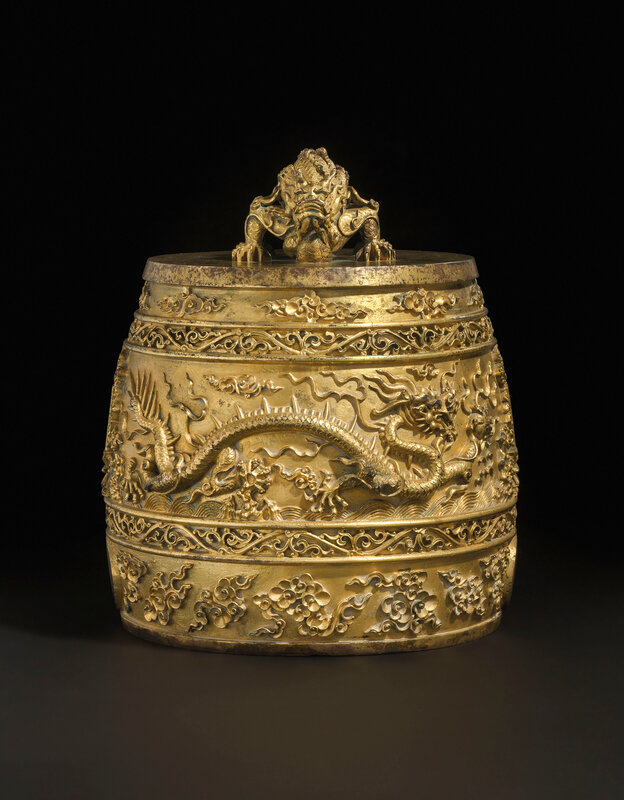







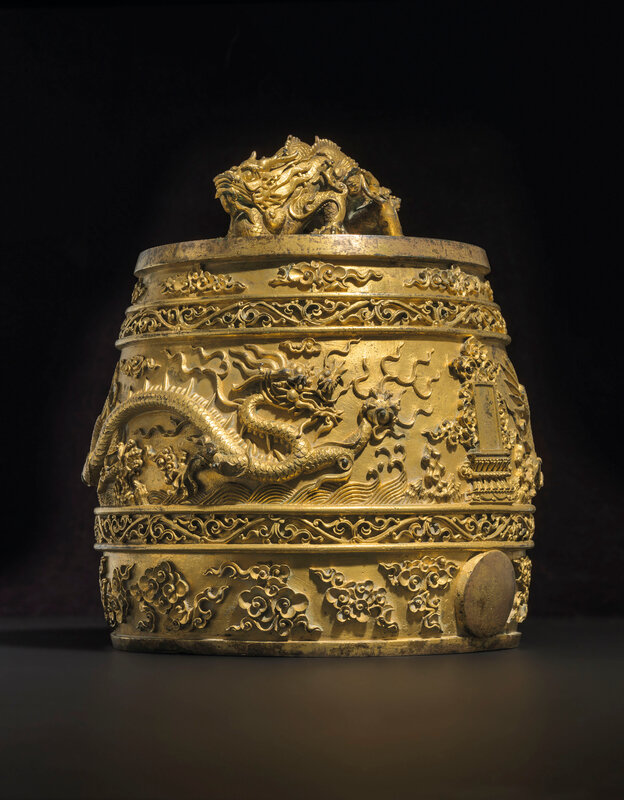




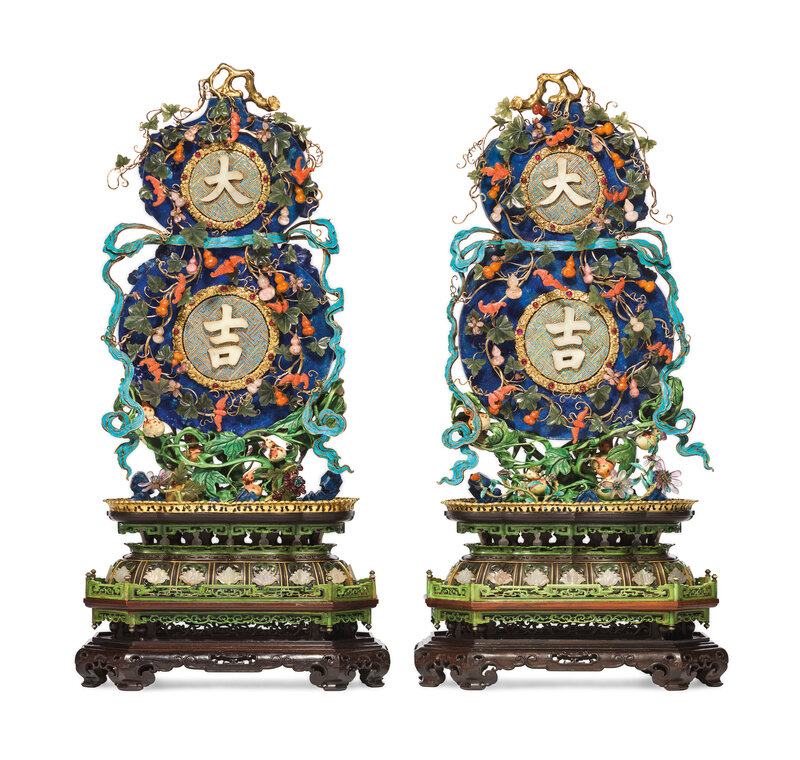
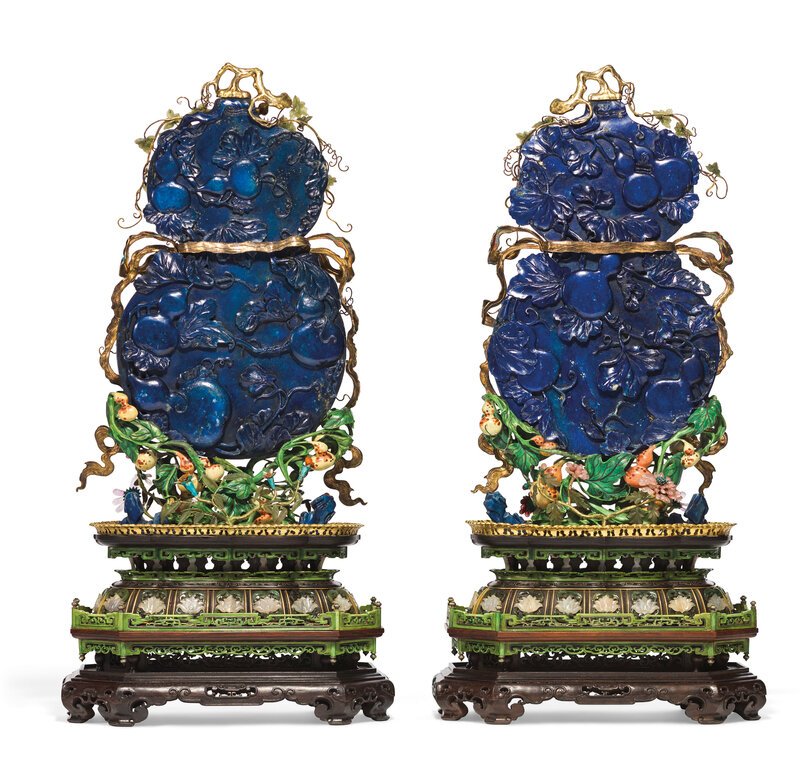
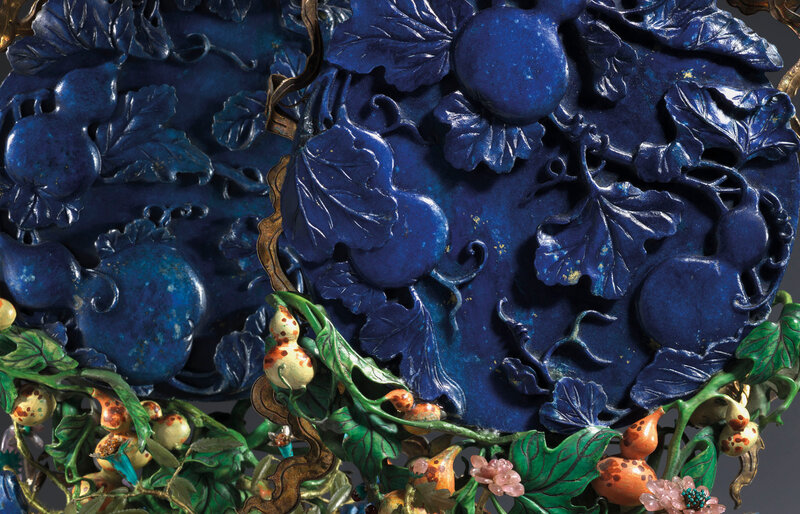

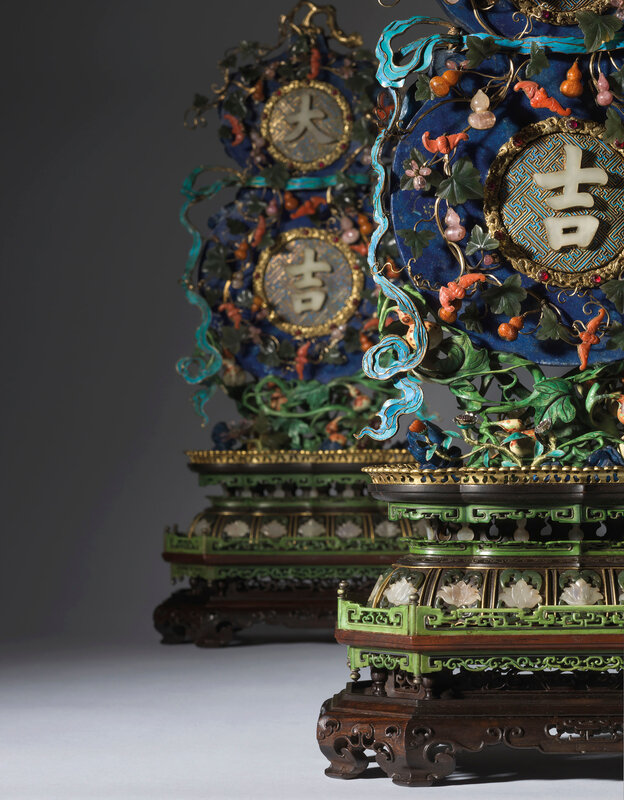



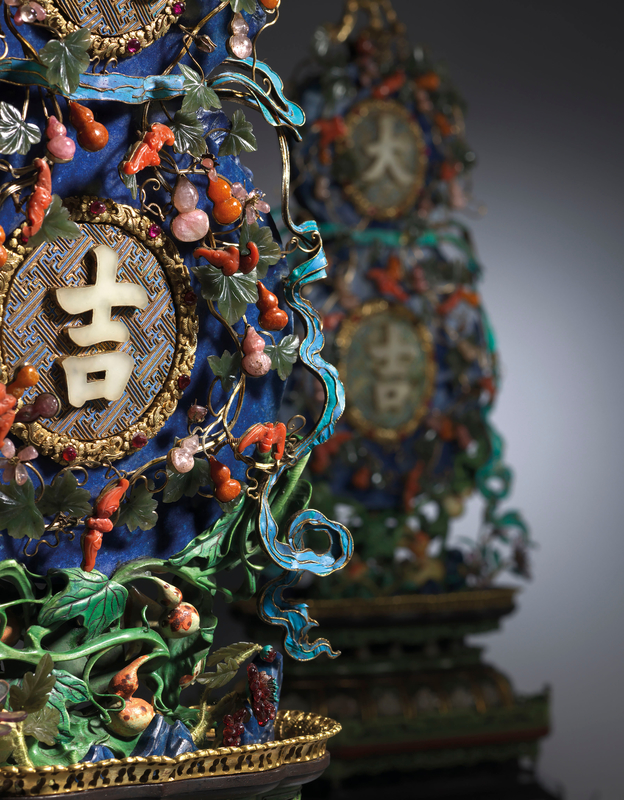









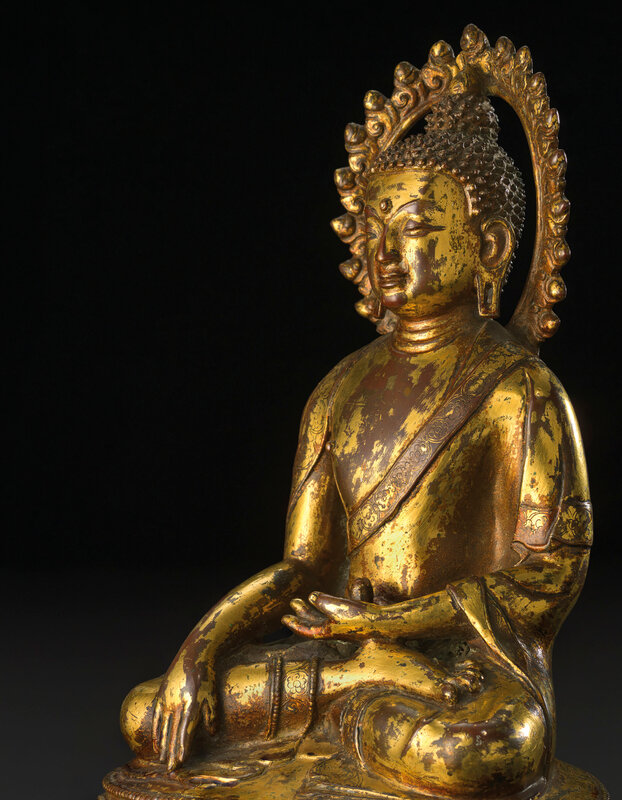






/image%2F1371349%2F20240303%2Fob_3525eb_801-1.jpg)
/http%3A%2F%2Fstorage.canalblog.com%2F45%2F10%2F119589%2F129777700_o.jpg)
/http%3A%2F%2Fstorage.canalblog.com%2F45%2F89%2F119589%2F129766046_o.jpg)
/http%3A%2F%2Fstorage.canalblog.com%2F52%2F01%2F119589%2F129765624_o.jpg)